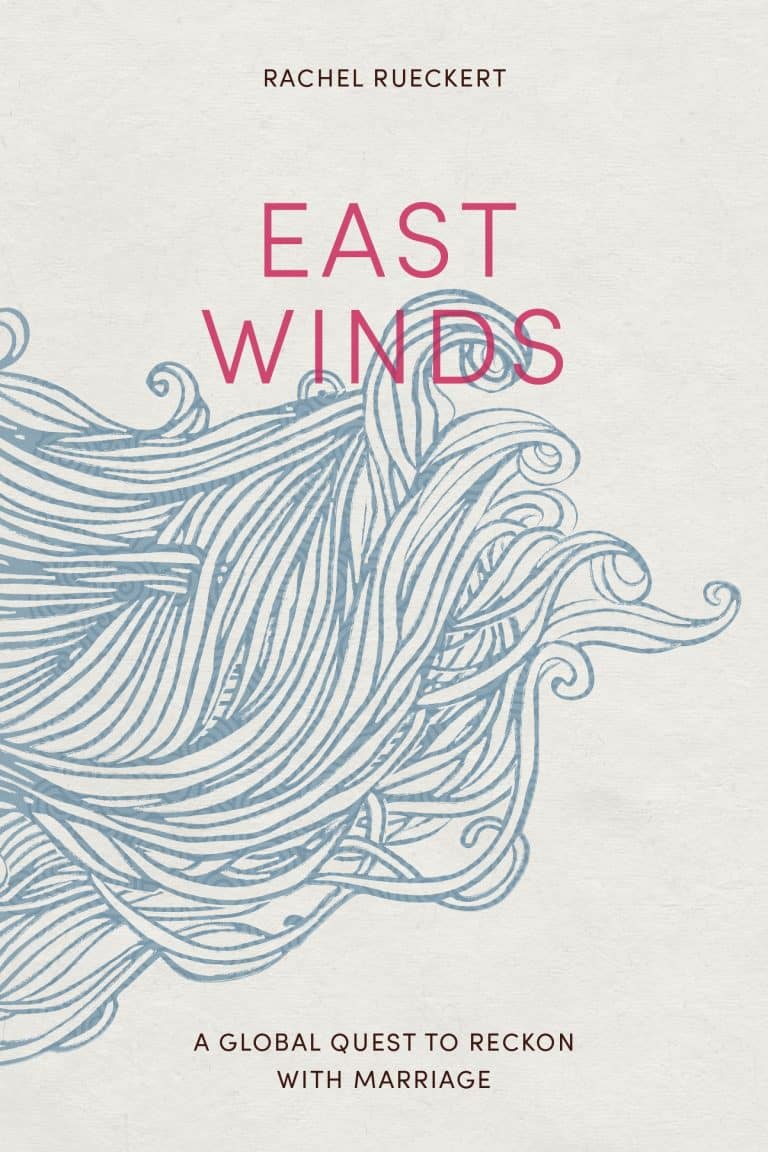Mormon women write a lot of memoirs. Authors of such books often appear to be motivated to tell stories about the complexity of their lives as Mormon women, challenging perceptions both inside and outside of the Mormon community. The best of these speak to both audiences and engage in deep reflection with both vulnerability and self-awareness. Still, many of these memoirs steer away from a close examination of the dynamics of marriage and relationships unless those marriages end in the book. Like the temple ceremonies that bind Mormon marriages together, the intricacies of marriage relationships remain somewhat sacred and secret in women’s memoirs, often brushed over, idealized, or demonized. Rachel Rueckert’s East Winds breaks new ground by centering her marriage, her struggle with the Mormon understanding of marriage, and her year-long global honeymoon journey, in which she explores the many ways that marriage is understood and lived out around the world.
Rueckert breaks new ground by centering her marriage, her struggle with the Mormon understanding of marriage, and her year-long global honeymoon journey.
Where many memoirs by Mormon women center issues of faith and spirituality, Rueckert emphasizes doubt, always highlighting the ways in which church ideals of marriage and family life do not align with the reality of her lived experience. The author’s doubts are relatable, painful, and compelling. Rueckert remains clear-eyed about her husband, herself, and her family of origin, tying many of her worries about marriage to reflections on her own parents, the breakdown of their marriages, and her relationships with them. She struggles with the concept of eternal marriage, finding commitment overwhelming and unknowable, but eventually finds comfort in saying yes to her marriage each day.
In the recently published book Revising Eternity: 27 Latter-day Saint Men Reflect on Modern Relationships (University of Illinois Press, 2022), editor Holly Welker observes in the introduction that few Mormon women write about sex and sexuality. Katie Langston, Elna Baker, and Nicole Hardy are notable exceptions. Rueckert’s book includes a discussion of sexuality before marriage and references to sex after marriage, challenging the expected silence around Mormon women’s sexuality. While such discussions and references might put off some readers who would deem such things as out of bounds, sex and sexuality in all its complexity are important and underexplored parts of Mormon women’s lives. Avoiding discussions of sexuality in Mormon women’s memoirs deprives Mormon women of their full humanity and three-dimensionality. We do not live PG lives and our stories do our readers a disservice when they entirely omit our experiences with our sexual selves. Naming and discussing these things in the open is a key part challenging the shame that so many have experienced in churches that emphasize sexual purity as essential for Christian faith. It was refreshing to see Rueckert discuss it as a normal part of her life and I hope that future memoirists, particularly those who continue to identify as Mormon, will follow her lead.
The last third of the book describes the final leg of the honeymoon journey — walking the Camino via the French Way, which took over a month. The young couple show up at their starting point to discover that they are woefully underprepared for the path ahead, but figure out how to cope with their limitations and each other along the way. As they walk, they meet other people and couples, observing the relationship dynamics of others and finding grace for themselves. The book ends on a hopeful note after a long and difficult path. Rueckert’s story offers readers inspiration, but without falling into a pit of cliché. Her authenticity and honesty make this book a compelling read.
Nancy Ross is a professor at Utah Tech University and bivocational pastor with Community of Christ.




